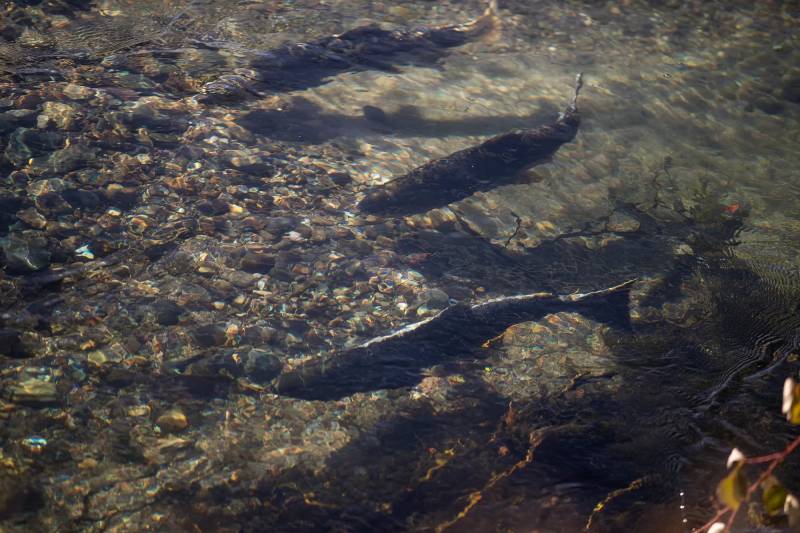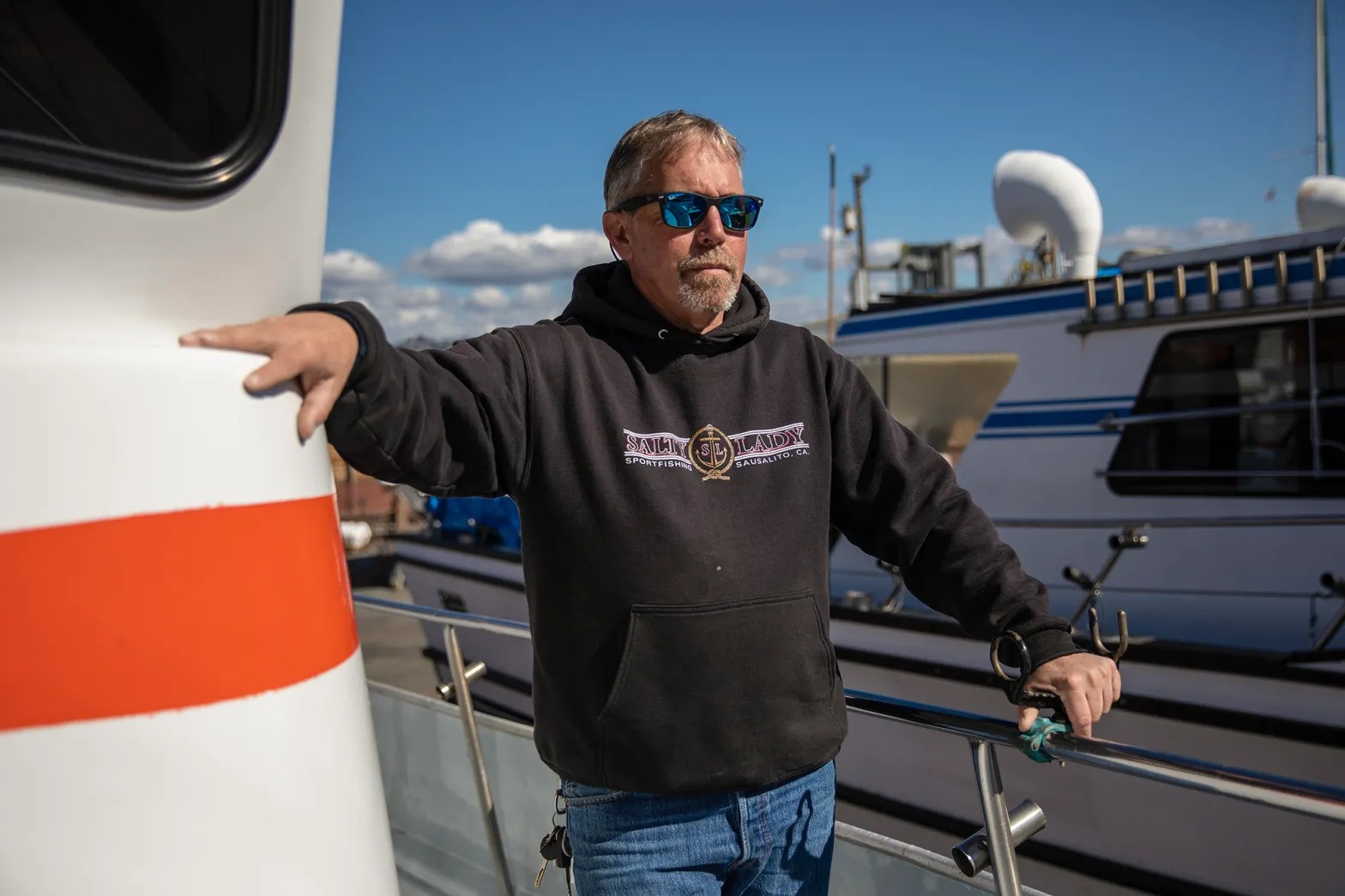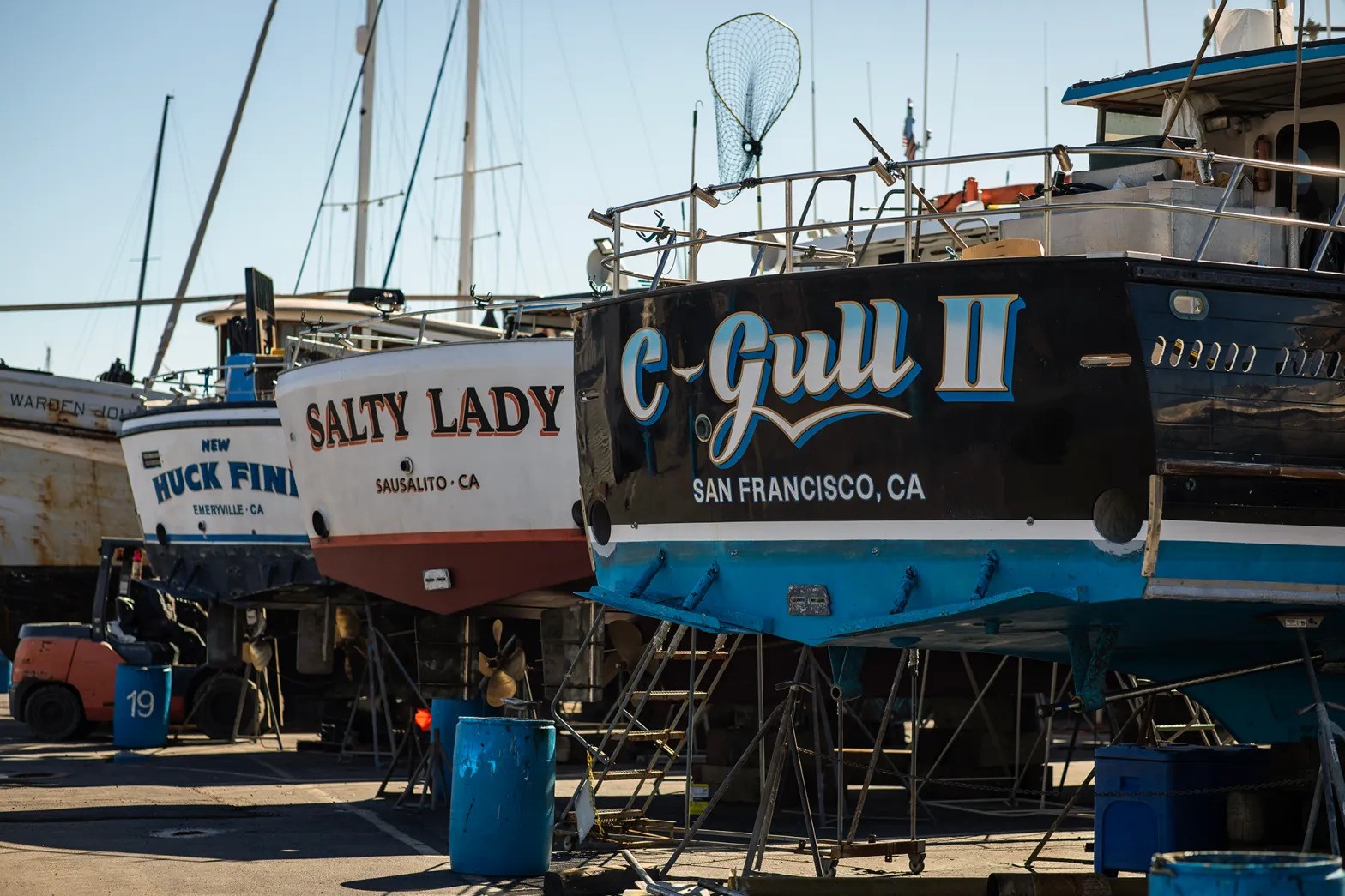“Some people, I’m sure, will not go fishing again,” she said. “They got a job that will hold them through and their momentum will shift, and I’m sure we’re going to lose members of our fleet.”
To make ends meet last year, Bates picked up bookkeeping work. But she doesn’t know yet what she’ll do this year. Bates’ boat is called the Bounty, a cruel irony now. Still, she said the boat has seen bad seasons before — and it’s bad luck to change a boat’s name, she said.
Tommy “TF” Graham also will keep working on land. A commercial fisherman based in Bodega Bay, he got a Class A driver’s license so he could drive a truck and stay afloat through the closures. Now, when he’s not crab fishing, Graham wakes up at 3 a.m. to drive frozen and farmed salmon and other fish from around the world into San Francisco.
“A guy has got to get up and put his boots on and go to work every day,” Graham said. Still, he said, “I used to be a provider; now I’m a consumer. It feels like shit, to tell you the truth.”
Drought and water diversions kill salmon
Monday’s decision follows the release of population numbers for Sacramento River fall-run Chinook, which make up the greatest proportion of California and Oregon ocean salmon fisheries. Their numbers are down from an average of more than 200,000 fish that returned to spawn in the mid-2000s. And those numbers are a fraction of the historical counts of between one and two million fall and spring-run salmon returning to the Central Valley every year.
Last year, fewer than 134,000 returned to the Sacramento River. That’s more than double the fish that returned in 2022, which was the third-lowest count on record. But it barely cleared the federal government’s minimum conservation target of 122,000 fish and fell 19% short of the number that had been projected to return — despite the cancellation of all salmon fishing.
Now, scientists estimate that 213,606 Sacramento River fall-run salmon are swimming off the coast. It’s more than last year — more even than the upper limit of the fishery’s conservation target. However, it is still the second lowest projection in a decade, according to a guidance letter from the National Marine Fisheries Service. “Caution is warranted to reduce the chances that the stock becomes overfished again.”
Federal officials attributed the struggling populations in part to low flows and high temperatures on the Sacramento River during California’s drought in 2021, when the fish returning this year were spawned.
However, the salmon industry also points to state and federal management of the Sacramento River and operations of the vast Central Valley Project, which funnels water south from Northern California’s rivers to irrigate a third of the state’s agricultural land and supply a million households.
In 2021, almost all of the endangered winter-run Chinook eggs in the Sacramento River were wiped out — cooked in dangerously hot water. The Pacific Fishery Management Council told state and federal water managers in 2022 that the conditions also could harm eggs of spring-run and fall-run Chinook salmon. Expressing their “grave concerns,” they said “a major factor” was the “high river temperatures that were under (the U.S. Bureau of) Reclamation’s control.”
The Newsom administration has come under fire from conservationists and the fishing industry for actions that could jeopardize salmon. These include waiving water quality requirements in the Delta and backing a controversial pact with major water suppliers related to diversions from the Bay-Delta watershed.
“It’s really hard for me to swallow that we export all this water and have little to no regulation on the farming,” Waldron said. “We’re taking away from a resource to give to another resource. And I don’t understand how we can let that happen, especially (since) the salmon are a natural resource.”
The Newsom administration unveiled a plan in January aimed at protecting and restoring salmon “amidst hotter and drier weather exacerbated by climate change.”
‘Perpetual situation’ for the Yurok Tribe
The Yurok Tribe in far Northern California is expecting restrictions this year as well, based on the Pacific Fishery Management Council’s Klamath Tribal allocation of roughly 6,300 to 6,600 fish.
“A commercial fishery is completely out of the question,” Barry McCovey Jr., who directs the fisheries program for the Yurok, the largest tribe in California with a reservation spanning a 45-mile stretch of the lower Klamath River.
“What we’re looking at now — that’s not enough for one fish for every tribal member. It’s less than that. And a typical family could maybe use 30 or 40, or maybe even 50 fish a year.”


